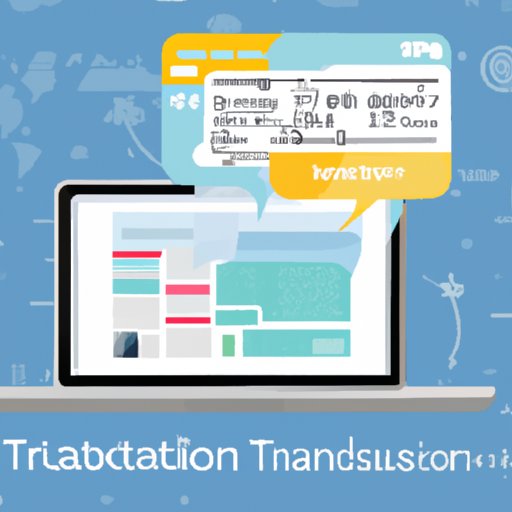
A Beginner’s Guide to Translating Your Website: Easy Steps to Reach a Global Audience
Expanding a business on a global scale requires more than just a top-notch website. Website translation is equally important to cultivate a global audience. It can be a daunting task to translate your website, but fortunately, there are several easy steps to help you get started. In this article, we discuss the basics of website translation, how localization differs from translation, tips for effective website translation, and how to translate your website into multiple languages.
Basics of Website Translation
Website translation is the process of converting website content from one language to another while maintaining the website’s look and feel. Language codes and translation tools play a crucial role in website translation. Language codes are used for indicating the language of the website and are mentioned in the HTML code of the website.
When it comes to translation tools, there are different ways to translate a website. One way is to use a plugin such as WPML. When WPML is installed and activated, it provides a translation interface inside the WordPress dashboard where users can translate their website’s content. Another way to translate a website is to use a translation service like Gengo, which is a professional translation service that can translate website content into multiple languages.
Step-by-Step Instructions for Translating Your Website
Once you have decided on the approach you will take for website translation, use these simple steps to translate your website:
Step 1: Plan Your Translation
A good translation plan is essential to making sure your translated website is updated in a timely and appropriate manner. Decide on the languages you want to translate your website into to get started.
Step 2: Translate Your Content
Using the plugin or translation service you chose, begin translating your content. Ensure that all of your website’s content is included in the translation and that your images, colors, and fonts are kept consistent throughout the translation process.
Step 3: Edit and Proofread
After the translation is complete, edit and proofread the content to ensure it is of high quality. Hire a professional editor if you are not confident in your language abilities.
Step 4: Publish Your Translation
Once you have edited and proofread your translation, it is time to publish it. Double-check that the content is displayed correctly and has been translated into the correct languages. Then publish the translation for your visitors to see.
Lost in Translation: Why Localizing Your Website Matters and How to Do It Right
While website translation focuses on converting website content from one language to another, localization involves more than just translation. It considers cultural and regional differences to provide a localized experience for each user.
Localization can help overcome language barriers, build trust with your audience, and ultimately boost user engagement. Tips for effective website localization include identifying the target audience, understanding their culture and values, and using appropriate images and colors.
Breaking Down the Language Barrier: Tips for Effective Website Translation
Effective website translation involves more than just translating website content. It is important to follow some best practices for website translation to ensure that your website is well-received by your audience.
Some best practices include using clear and concise language, avoiding the use of idioms and metaphors, and paying attention to details such as punctuation and spacing. When translating navigation menus, forms, and other interactive elements of your website, it is important to use simple and clear instructions to ensure that users understand the usage.
The Do’s and Don’ts of Website Translation: A Comprehensive Guide for Website Owners
Website owners must be wary of some common mistakes when it comes to website translation. Using machine translation tools can lead to mistranslations, and neglecting to proofread content can lead to errors that may be interpreted as unprofessional.
It is important to work with a professional translation agency or freelancer to ensure that your website content is translated accurately and meets your quality standards. Some tips for working with a translation agency include providing clear instructions, selecting a translation agency that specializes in your industry, and checking the quality of the translation before publishing it on your website.
From English to Everything Else: A Step-by-Step Guide to Translating Your Website into Multiple Languages
Expanding your website into multiple languages can help you reach a wider audience. Translating your website into multiple languages follows similar steps to the initial translation, but with a few extra considerations.
Start with a plan to determine which languages you want to translate your website into and the order in which you want to translate them. Use the same translation service or plugin you used for the initial translation to keep the translation consistent. Finally, be sure to thoroughly test the translated website to ensure that everything is displayed correctly.
Conclusion
Website translation is a valuable tool for reaching a global audience. By following our beginner’s guide to website translation, you can get started on translating your website into multiple languages for a wider audience. Remember to consider localization and best practices to ensure that your website content is well-received by your audience. Finally, work with a professional to avoid mistakes when translating your website.





